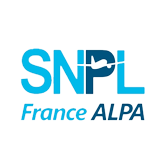
Joint Position Paper: Disruption of GNSS Signals
ECA, FSF, IFALPA and IFATCA are increasingly concerned about the ongoing disruption of GNSS signals worldwide through jamming and/or spoofing. This Position lists the measures that the four organizations believe should be taken as a matter of urgency to address this problem.
Position Paper IFALPA: Survivability and Evacuation Aspects in Final Reports
Final reports of occurrences that involved an evacuation of the aircraft usually lack consistency when it comes to describing the evacuation process. This is, however, an essential safety aspect, and IFALPA believes that final reports should always include a thorough study of the evacuation sequence and survivability, in accordance with the provisions of ICAO Doc 9756, along with the relevant safety recommendations.
IFALPA Briefing Leaflet: Runway Misalignment During Approach
Following a number of safety occurrences involving flight crews attempting approaches and landings on surfaces different from those for which they received landing clearance (wrong runways, taxiways, and even wrong airports), this BL raises awareness on the contributing factors, and offers a set of safety recommendations to mitigate this risk.
Position Paper IFALPA: Use of Social Media by Pilots
Social media has blurred the line between our professional and personal lives. Posting a status update or short comment may seem innocuous, but what pilots do and say on social media may have serious consequences. Pilots are encouraged to always adhere to their company policy regarding social media, and in the absence of policy, to practice extreme caution. Read and share the Position in full.
Position Paper IFALPA: Sustainable Aviation Fuels
Sustainable aviation fuels (SAF) or certified drop-in fuels represent a broad category of fuels derived from renewable, non-fossil sources, including advanced biofuels and e- fuels, offering a sustainable alternative to conventional jet fuel. The introduction of SAF will play a major role in the future decarbonization of aviation, together with the introduction of new engine and aircraft technology and, more efficient flight procedures and ATM improvements (...)
Position Paper IFALPA: Yellow Runway Edge Lights
It has been interpreted that the ICAO provision detailed in Annex 14, 5.3.9.7(b) “at the remote end of the runway from the end at which the take-off run is started” in a way that runways used for landings do not need yellow edge lights on the last one-third or 600m of a runway. According to the IATA Safety Report 2019-2024, 31 out of 40 runway excursions occurred during landings (...)
Position Paper IFALPA: Lithium Battery Fire/Smoke Risk on the Flight Deck
Lithium battery fire and smoke events in aviation pose various safety risks. Studies by EASA, FAA, and ICAO highlight the risk of lithium battery and Personal Electronic Device (PED) fire and smoke in the flight deck. A fire of any magnitude in the flight deck is a serious event and a risk to flight safety, but lithium battery fires may be impossible to contain. It is the unique characteristics of a lithium battery thermal runaway event that creates an increased risk dimension to this hazard mitigation issue (...)
Position Paper IFALPA: Fire Risk from Lithium Batteries in Airport Vehicles
Electrification of airside service vehicles is gradually becoming a normalized and integral part of airport operations with electric cars and other lithium battery powered airport ground equipment already being widely used in many airport environments. It is anticipated that other airport machinery, such as pushback vehicles, fuelling trucks and loading equipment, airport installations or ground / facility units, will be introduced in pursuit of carbon neutral goals of airports and air operators. The continuance of this trend will inevitably increase the number of electric vehicles used airside at airports, including in proximity to aircraft, which will increase the risk of an electric vehicle fire affecting aircraft and other critical infrastructure (...)
Position Paper IFALPA: Energy Content of Lithium Batteries in Air Cargo
ICAO adopted a provision to limit the State of Charge (SOC) of bulk Lithium-Ion Batteries (UN 3480) and Lithium-Ion Batteries packed with equipment (UN 3481) shipped as cargo on aircraft to 30%. Research by Underwriters Laboratories(1) and the FAA(2)(3) as well as other unpublished data indicate that failures involving current models of lithium-ion batteries at SOC below 30% are unlikely to result in thermal runaway, and if there is thermal runaway, propagation from one cell to another is unlikely. Flammable gas production is also greatly reduced for tested batteries with reduced SOC. Lithium-ion batteries transported at less than 30% SOC are also less likely to aggravate a fire in case of exposure to an external flame source (...)
Press Release IFALPA on Accident of Jeju Air Flight 2216 in Muan, Republic of Korea
The International Federation of Air Line Pilots’ Associations (IFALPA) is closely monitoring the developments related to this morning's tragic accident of Jeju Air Flight 7C- 2216, a Boeing 737-800 (reg. HL-8088) that overran the runway on landing at Muan International airport in the Republic of Korea. Our thoughts are with the friends and families of the reported 181 passengers and crew members that were onboard the aircraft. (...)
